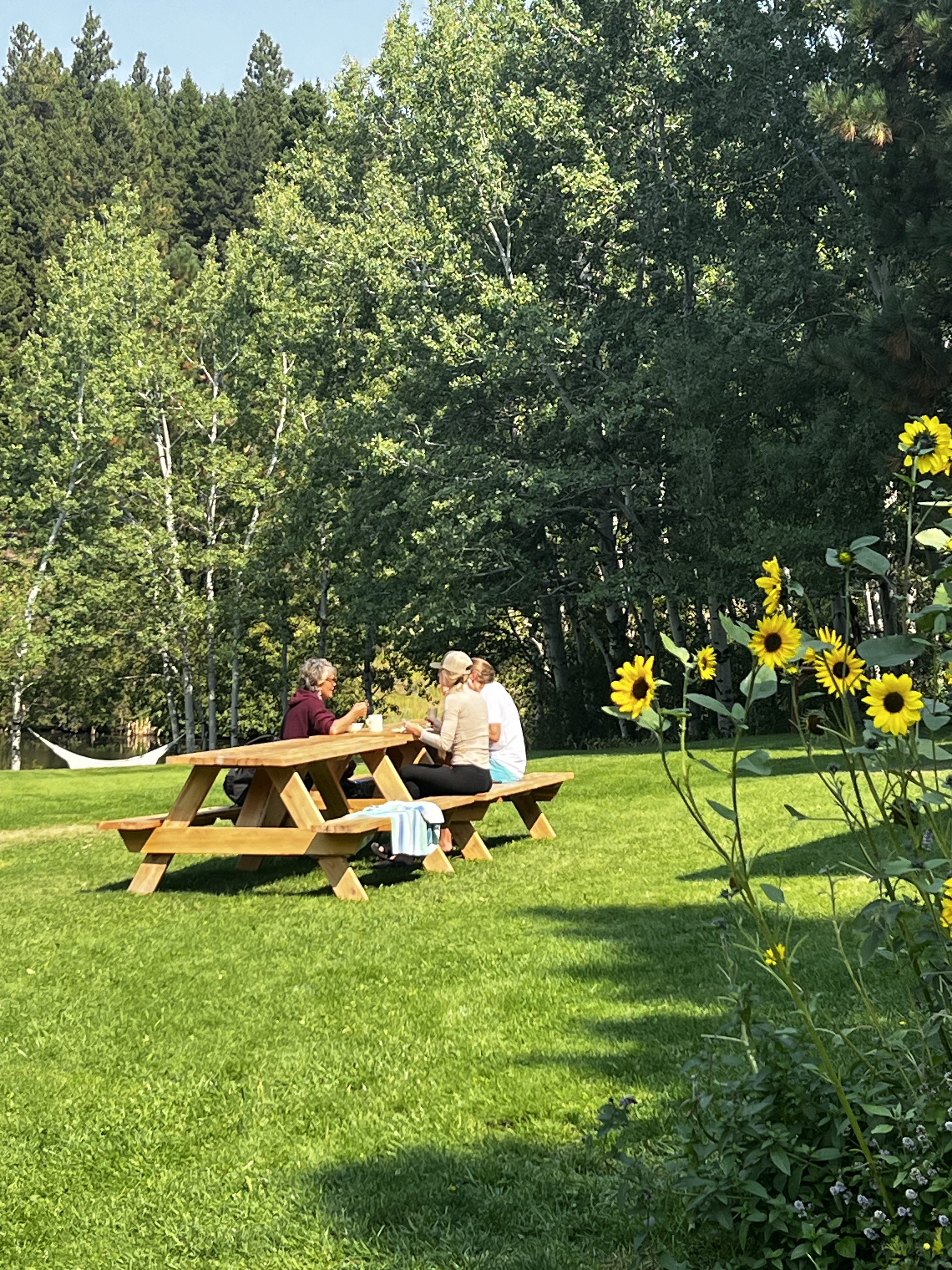
by Linda Lee
Each person who becomes seriously ill or has a sudden physical trauma begins a life-changing journey. That journey is intimately shared with the individual who becomes the primary caregiver. Their parallel paths bring unique opportunities as well as immense challenges. As the caregiver adds new roles and responsibilities to commitments already in place, life can begin to feel overwhelming. How can the caregiver maintain the balance needed to stay healthy amid the physical, emotional, and mental challenges related to caregiving? In fact, given the realities of daily life, how can the caregiver even THINK about finding balance?
Who Are Caregivers?
In Already Toast: Caregiving and Burnout in America, Kate Washington states that the average age of caregivers in the United States is 49 years. Approximately 75% are female, and women are most likely to continue caregiving over a long period. They typically devote 22 hours per week to caregiving responsibilities, which include physical and emotional care as well as services to meet basic needs. Lack of insurance coverage or insufficient staff may also force caregivers to assume medical and nursing tasks that are beyond their comfort levels.[i]
“Sandwich” caregivers are those who are caring for both children and aging parents or other relatives. They also are likely to be working full- or part-time jobs. These caregivers are pulled in multiple directions and face multifaceted demands.
Another common caregiver is the older adult caring for an aging spouse. Although they may be retired and have more time than their younger counterparts, they may have more concerns about diminished energy or physical strength and new expenses. Dreams for their retirement years may be lost. They also may worry about who will care for their loved one if they become ill or die.
Caregiving Challenges
Regardless of the situation, caregiving has many life consequences. The list is as unique as the individuals involved, but there are some universal themes.
As the person who needs care loses abilities and independence and the caregiver assumes more responsibilities, there is a resulting shift in roles within the partnership. These changes affect both the caregiver and the loved one and can be viewed from either side. The primary breadwinner may no longer be able to hold a job; the person who always cooked or paid bills may need to give up those tasks; the person who was a previous source of comfort, daily laughter, or strength in the relationship may now be too ill (or too busy) to fill these roles.
There is likely to be a change in the ill person’s self-image, and caregivers may also find themselves feeling differently about their loved one as they adjust to these changes. In some cases, caregivers may be forced to care for someone they don’t particularly love or like. Even if there is a solid relationship in the beginning, stressful days can make both parties frustrated and short with each other. Some caregivers state that their loved ones not only fail to thank them or recognize their care, they also may lash out at them while being nice to others. The caregiver is their safe person—the one they know will be there for them as they express their fears and frustrations. Even if the caregiver understands this dynamic, it is very difficult not to take these attacks personally, and the words spoken may be difficult to forget. Family dysfunction and conflicts also may be heightened during these periods as everyone grapples with major decisions and the reality of what lies before them.
The physical, mental, and emotional effects on the primary caregiver vary with the person and likely may depend on the day. Examples of physical symptoms may include insomnia, general fatigue, or susceptibility to illness. Mentally, the caregiver may experience depression, confusion, a sense of being overwhelmed, or an inability to concentrate. Emotional effects may include a sense of isolation, resentment, fear, anger, helplessness, grief over the possibility of losing the loved one or over loss of life as it once was, guilt, envy of others who are not in this situation, or embarrassment, particularly if the person being cared for has behavioral issues from a condition such as dementia.[i]
Fortunately, there may also be positive outcomes of the caregiving experience. The time spent together while caregiving may bring both individuals closer. They may find that they’re more vulnerable with each other, which can lead to deep discussions. Children often comment that they’re grateful for the chance to get to know their aging parents as adults who have stepped away from their parental role and feel more like peers. There may be more time to talk about memories, experiences, philosophies, and concerns. Moments of shared joy and laughter may be held as more precious during this period. The caregiver may appreciate this opportunity to show the individual how much they’re valued. Ideally, they will support each other as they take this journey together and bring each other comfort and hope.
Finally, an important universal theme is that the caregiver never seems to have enough time to accomplish all there is to do. Therefore, when someone suggests that they need to take care of themselves, they may respond with, “How do I do that when my time is totally consumed with daily responsibilities related to my children, parent or spouse, job, home, and more?” This is a good question!
Creating Balance in Daily Life
Life has changed, perhaps permanently. This fact requires a shift in the caregiver’s priorities and approach to life. Time at the gym or leisurely lunches out with friends may no longer be possible. However, breaks from our challenging routines can still be found in smaller increments. Using a 10-minute guideline may be helpful: a 10-minute meditation, stretch, nap, chapter in a book, phone call to a friend, or other source of pleasure can provide rejuvenation for the hours ahead.
Similarly, increased awareness or mindfulness can help the caregiver take pleasure in simple things, such as the sight of sunshine on a yellow daisy, the sound of a child’s laugh, or the touch of a loved one’s hand. The pleasure gained from truly noticing and internalizing these moments can help us realize that there still are gifts being offered to us amid our challenges.
It isn’t realistic to think that caregivers can do everything themselves. Most of us like being independent and hesitate asking for help, but we need to give ourselves permission to reach out for it. This is not a time for isolation. Offers of help are gifts of love and should be received as such. If the caregiver has the resources, others may be hired to help with outdoor or indoor chores. If not, asking a family member or friend to pitch in may benefit both parties. Most friends are desperate to do something to provide assistance, and they receive a sense of satisfaction and purpose if allowed to do so.
Caregivers benefit from looking for ways to avoid or diminish the effects of caregiving described above. On a regular basis, we may ask, “What do I miss about my previous life?” If the answer is laughing with friends over coffee at a restaurant, we may ask the friends to bring coffee over. The minutes together are more important than the location. If the answer is a weekly outing to a spiritual organization or an occasional uninterrupted night of sleep, perhaps friends, family members, or other volunteers could alternate staying with our loved one. Carryout meals eaten by candlelight may be substituted for a date night out. Allowing ourselves such moments of pleasure and nurturing give us strength to face our many demands.
A caregiver support group can be helpful. The members know what we’re going through. They have resources, ideas, and stories about experiencing similar situations. They help us realize that we’re not alone and provide support through trying times. They also may help us weigh difficult decisions. Many groups are offered online, so the caregivers can remain at home while being part of the community. There also are many books, websites, podcasts, videos, and other resources available. Other networks of friends and family are invaluable. We need to know that we’re taking this journey with others who walk beside us.
Caregivers also need to be aware of the toll caregiving is taking on them, both for themselves and others. Our attitude and overall aura of wellbeing affects our loved one. Projecting calm and confidence rather than fear and worry eases the ill person’s burdens. Signs indicating that we’re overwhelmed may range from overall anxiety, total exhaustion, and feelings of defeat to substance abuse or suicide ideation. All signs should be heeded. Reaching out for help, such as through individual counseling, is not a sign of weakness—it’s a sign of awareness that all of us can benefit from professional support during life’s greatest trials.
Finally, in The Caregiver’s Tao Te Ching, a poem titled “True Nature” begins with this line:
When you see everything changing
before your eyes,
have confidence in what you cannot see.[ii]
Have confidence in the love that binds you to the person receiving your care. Have confidence in knowing that you are loved, you matter, and you are doing the best you can. Have confidence in the guidance coming to you from the universe. These are among the things that ultimately give us peace. There are no life challenges that cannot be met if we trust in love’s ability to hold and sustain us.

This is the third installment in a series of articles Linda is writing for caregivers and family and friends who wish to support them.
Read the first installment HERE. | Read the second installment HERE. | Read the fourth installment HERE.
Linda Lee, PhD, is a published author and retired professor and research editor. She has offered workshops for The Yoga Sanctuary and other organizations, including Tidewell Hospice. In this series, she will present guidelines she developed following the loss of her spouse, through her training as a Tidewell volunteer, and from the grief literature.
_________________________________________________________________________
[i] Kate Washington, Already Toast: Caregiving and Burnout in America. (Boston: Beacon Press, 2021), Chapter 5.
[i] Nancy L. Mace and Reter V. Rabins, The 36-Hour Day: A Family Guide to Caring for People Who have Alzheimer’s Disease, Related Dementias, and Memory Loss (5th ed.). (New York: Grand Central Lifestyle, 2011).
[ii] William and Nancy Martin, The Caregiver’s Tao Te Ching: Compassionate Caring for Your Loved Ones and Yourself. (Novato, California: New World Library, 2011), p 33.
